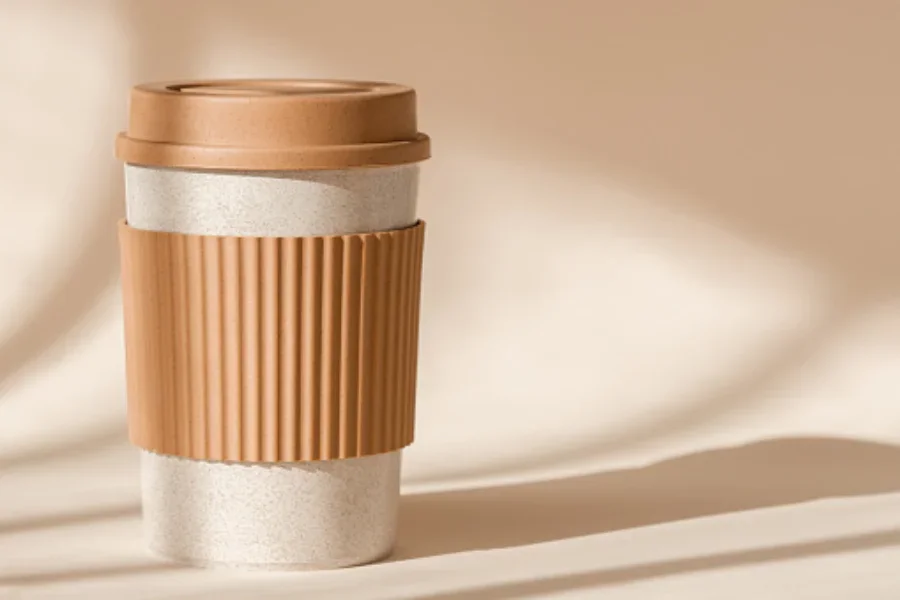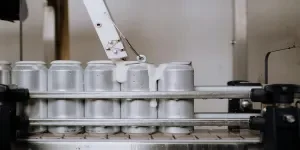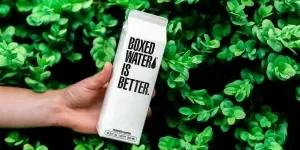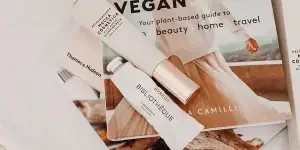Companies and brands are always looking for better ways to improve their customer service to stay up-to-date with the stiff competition in the market. Catching up and implementing the latest industry trend is one of the best ways to meet customer needs.
Sustainable packaging materials happen to be one of the latest packaging trends to look out for. Companies looking to package fast-moving consumer goods (FMCG) like consumer and household products, food and beverage, beauty, and personal care, now have the best alternative to avoid single-use plastic packaging products. Here are the latest packaging trends, from bio-based solutions to environmentally friendly materials.
Table of Contents
Overview of the global packaging market
The top sustainable packaging trends
Wooden & bamboo packaging trends
Why wooden and bamboo packaging trends are sustainable
The benefits of sustainable packaging
Conclusion
Overview of the global packaging market
The global packaging market is predicted to register a compound annual growth rate (CAGR) of about 3.94% (US $49.3 billion) during the forecast period of 2023–2030. However, it has experienced consistent growth over the last decade due to the expansion of new markets, substrate choice changes, and changes in ownership dynamics.
Traditional packaging is fast becoming replaced by sustainable, flexible, and recyclable packaging. This may challenge other rigid pack formats like glass jars and metal tins for a wide range of food products. Consumer behavior is likely the determiner of the sudden surge of sustainable product packaging design.
Furthermore, the rising consumer demand for packaged products is majorly due to their eating habits and evolving lifestyle, which is now having an imperative impact on the global market. These top packaging industry trends offer increased safety and convenience, quality and freshness of products, and extended shelf life.
The top sustainable packaging trends
In the packaging design industry, there have been a lot of improvements as most consumers seek portable packaging with a fancy touch. But most importantly, sustainable packaging is the real deal. In all, wooden and bamboo packaging trends seem to top the list.
1. Green materials packaging trends
In the last six years, many companies have given in to the pressure of sustainable packaging to meet consumer demands. Essentially, the call for green packaging materials and programs has become almost deafening.
As such, ideas such as programs to lower businesses’ carbon footprint and switch from traditional to sustainable packaging materials are at the forefront of many brands. However, this is all for a good reason. Over the past years, consumers are increasingly demanding that their favorite brands “go green” adopt more earth-friendly packaging materials.
As sustainable packaging is now a veritable war cry from consumers around the world, many businesses are making efforts to switch from plastics to fully recyclable packaging materials such as cardboard, paperboard, wood, and bamboo containers, that may in time, be coddling manufactured products.
2. Minimalist packaging trends
The minimalist packaging trend has remained consistent since the previous year. Minimalist packaging continues to increase in popularity for various reasons.
First, minimalism is more like an “act of global rebellion” oversaturated with colors, seemingly endless diverse products, and a sea of typography. This act makes these soft, sometimes quite bland packages stand out from the crowd. And most of the common packaging materials used for creating minimalist packaging are recyclable.
Therefore, minimalist packaging attracts consumers’ attention because it’s both easy to identify and understand. In addition, it is more environmentally-friendly than most flamboyant alternatives. So, expect to come across more minimalist packaging out there towards the first quarter of the new year and beyond.
3. Reusable packaging trends
Recyclable packaging is what most consumers vie for these days. This packaging is made from long-lasting, durable materials, such as wood, glass, bamboo, and fabric. In addition to minimizing waste going to landfills, this kind of packaging helps promote brands to a wider audience. Besides, a high-quality branded tote is more likely to be reused than a flimsy plastic bag.
Plastic can be easily replaced with recyclable materials such as wood, cardboard, and paper. Aside from being affordable, they are highly versatile and can be used to package a variety of products creatively. So as companies use this idea to build a green world, consumers will also get to enjoy their fancy containers.
Wooden & bamboo packaging trends
The major packaging trend to look out for is the wooden and bamboo packaging trends. They seem to be paving the way as eco-friendly materials and are completely sustainable. One of the common environmental benefits of wood and bamboo is their ability to absorb carbon dioxide and produce oxygen.
Moreover, this type of packaging offers durability and has a variety of uses. The wooden material can easily be transformed into an art project or reused for packaging other household items. It is expected that wooden and bamboo packaging should play a key role in the renewable packaging sector in the next decade.
Why wooden and bamboo packaging trends are sustainable
Bio-based packaging such as wood and bamboo seem appealing because they are produced from renewable resources which can be easily replenished by agricultural crop and harvest rotations. It is little wonder why jewelry boxes, hinged boxes, wine boxes, cream jars, and cosmetic boxes are in high demand for both wood and bamboo with today’s consumers.

Furthermore, a large number of companies are looking to take on a more sustainable approach to their products as the demand from consumers for eco-friendly products increases by the day. What better way can a company serve its consumer than produce sustainable packaging such as bamboo and wood?
Other features that make wooden and bamboo packaging stand out are their:
- Biodegradable and compostable nature
- High renewability
- Environmentally friendly
- Durable and sturdy nature
- Anti-bacterial objects
- Versatility and innovation
The benefits of sustainable packaging
There are numerous benefits to implementing sustainable packaging. It can go a long way in minimizing environmental impact, promoting a sustainable lifestyle, and conserving resources. Here are some of the common benefits of sustainable packaging:
Minimizing environmental impact
Sustainable packaging can help reduce the environmental impact of a product by using compostable or recycled materials. Additionally, it minimizes the amount of waste generated during the production process.
Faster composting and recycling
Sustainable packaging such as wood and bamboo makes it easier for consumers to compost or recycle products. Moreover, it’ll help companies reduce the amount of waste to be disposed of in landfills.
Conserving resources
Sustainable packaging conserves server resources like plastic and paper. Using sustainable materials can save companies money for their supplies and minimize their carbon footprint.
Conclusion
The challenge for all businesses is to adopt packaging that not only meets the objective of sustainability but also performs the tasks for which the packaging is required. And, not only should it protect the product but also respect the environment.
However, it should remain within the budgetary reach of brands and distributors while being able to meet the company’s market requirements in terms of performance, cost, and safety. The best packaging material can serve this purpose and more!




 Afrikaans
Afrikaans አማርኛ
አማርኛ العربية
العربية বাংলা
বাংলা Nederlands
Nederlands English
English Français
Français Deutsch
Deutsch हिन्दी
हिन्दी Bahasa Indonesia
Bahasa Indonesia Italiano
Italiano 日本語
日本語 한국어
한국어 Bahasa Melayu
Bahasa Melayu മലയാളം
മലയാളം پښتو
پښتو فارسی
فارسی Polski
Polski Português
Português Русский
Русский Español
Español Kiswahili
Kiswahili ไทย
ไทย Türkçe
Türkçe اردو
اردو Tiếng Việt
Tiếng Việt isiXhosa
isiXhosa Zulu
Zulu